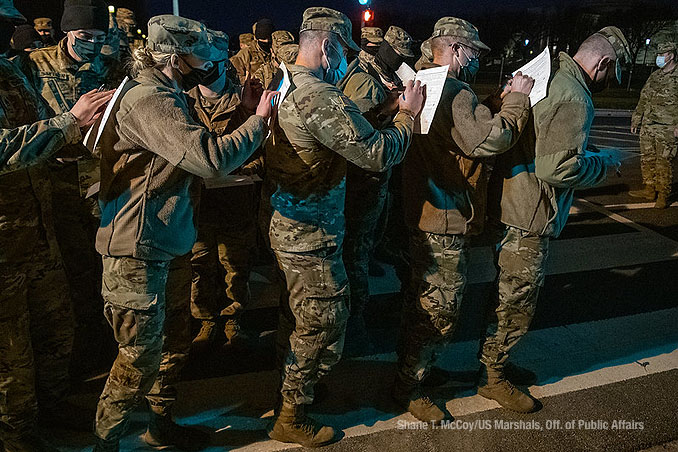mariowil7
Jedi Master
Today I think many are manipulated to become so "obsessed" by the propaganda that they are unable to gather true knowledge.
I think one has to develop or already have a capacity for "perception".
Yes @goyacobol... Some years ago I read some material about PERCEPTUAL FILTERS. And The Perceptual Capacity that the C's refers is indeed valid...
Read below the Hugeeeeee... amount and or type of perceptions (Perceptual Filters discovered until now just here in 3D):
Understanding them will allow us to have a good "Perceptual Firewall" sort of saying.
What is perception?
Perception is the ability to capture, process, and actively make sense of the information that our senses receive. It is the cognitive process that makes it possible to interpret our surroundings with the stimuli that we receive throughout sensory organs. This important cognitive ability is essential to our daily lives because it makes it possible to understand our surroundings. It's possible to train and improve perception with cognitive stimulation. It is an active process and requires that we process information with both "bottom-up" and "top-down" processing, meaning that we are not only directed by the stimuli that we receive (passive, bottom-up processing) but that we expect and anticipate certain stimuli that control perception (active, top-up processing).
Types of Perception and Neuroanatomy
Perception is a complex process that allows us to connect with the surrounding world. Classically, it is divided in five senses:
- Visual: The ability to see and interpret light information within the visible spectrum that arrives to our eyes. The area of the brain responsible for visual perception is the occipital lobe (primary visual cortex V1 and secondary visual cortex V2).
- Hearing: Ability to receive and interpret information that arrives to our ears by audible frequency waves through the air or another mean (sound). The brain part in charge of the basic stage of auditory perception is the temporal lobe (primary auditory cortex A1 and secondary auditory cortex A2).
- Touch, somatosensory or haptic : The capacity to interpret information of pressure and vibration received on the surface of our skin. The parietal lobe is the part of the brain responsible for the basic stages in haptic perception (primary somatosensory cortex S1 and secondary somatosensory cortex S2).
- Smell or olfactory : The ability to interpret information of chemical substances dissolved in the air (smell). Basic stages of the olfactory perception are done by the olfactory bulb (primary olfactory cortex) and the piriform cortex (secondary olfactory cortex).
- Taste: The ability to interpret information from chemical substances dissolved in saliva (taste). The main brain areas in control of the basic stages are the primary taste areas G1 (postcentral inferior gyrus, parietal ventral lobe, anterior insula, fronto-parietal medial operculum) and secundary taste areas G2 (caudolateral frontal orbital cortex and anterior cingulate cortex).
Other types of Perception
Apart from the classical five senses, today we are aware that there are other types of perception:
- Spacial : the ability to be aware of your relationships with the environment around you and with yourself. It is related to the haptic and kinesthetic perception.
- Form : the ability to retrieve information about the limits and aspects of an entity through the outline and contrast. It is related to visual and haptic perception.
- Vestibular : the capacity to interpret gravity's force according to the relative position of our head and the floor. It helps maintain balance and control our posture. It's related to auditory perception.
- Thermoception or thermal : the ability to interpret temperature on the surface of our skin. It's related to the haptic perception.
- Nociperception : the capacity to interpret very high or very low-temperature stimuli, as well as the presence of harmful chemicals or high-pressure stimuli. It is related to the haptic and thermoception.
- Itching : the ability to interpret harmful stimuli on our skin that causes scratching. It's related to haptic perception.
- Propioception: the ability to interpret information about the position and state of our muscles and tendons which allow us to be aware of our posture and in what area is each part of our body. It is related to the vestibular and haptic perception.
- Interoceptive : the capacity to interpret the sensations that indicate the state of our internal organs.
- Time : The ability to interpret changes in stimuli and be able to organize them in time.
- Kinesthetic : the ability to interpret information about movement and velocity of our surroundings and our own body. It is related to visual, spatial, time, haptic, interoceptive, propioception and vestibular perception.
- Chemosensory : the ability to interpret chemical substances dissolved in saliva that translate into strong tastes. It is related to taste perception but the two use different structures.
- Magnetoreception or magnetoception: the capacity to interpret information from magnetic fields. It is more developed in animals like pigeons. However, it has been discovered that humans also have magnetic material in the ethmoid (a nose bone), making it possible for humans to have magnetoception.
Phases of Perception
Perception is not a single process that happens spontaneously. Instead, it is a series of phases that take place in order for the correct appreciation of stimuli to occur. For example, to perceive visual information, it's not enough for light to reflect off an object and this stimulating our retinal receptor cells for them to send this information to the correct brain areas. For it to happen, all of that is necessary. However, it is an active process, where we have to select, organize and interpret the information sent to the brain:
- Selection: The number of stimuli we are exposed daily exceeds our capacity. For this reason, we need to filter and choose the information we want to perceive. This selection is done through our attention, experiences, necessities and preferences.
- Organization: Once we know what to perceive, we need to gather the stimuli in groups in order to give them meaning. In perception, there is synergy, since it is an overall recognition of what is perceived and it can't be reduced to separate stimuli characteristics. According to Gestalt principles, stimuli organization is not random but instead it follows specific criteria.
- Interpretation: When we have organized all the selected stimuli, we then proceed to give them meaning, completing the perception process. The interpretation process is modulated by our experience and expectations.
Other Gestalt principles
Other Gestalt principles highlight the person's role in this process, designating a three stage sequence:
- Step 1: First hypothesis about what we are about to perceive. This will guide the selection, organization and interpretation of the stimuli.
- Step 2: Entrance of the sensory information.
- Step 3: Contrast the first hypothesis with the sensory information obtained.
Examples of Perception
- It's important to identify on time any perceptive problem that the student might have. This will allow us to apply the means necessary so no auditory information is lost (what the professor says) or visual information (the text on the board and books).
- A correct perception helps workers do their job efficiently. Artists are a clear example of the importance of it in the professional world. However, any job requires, in a greater or lesser manner, some type of perception: sweepers, taxi drivers, designers, policemen, cashiers, builders, etc.
- Perceiving road signs, as well as sounds from your own car, is essential in driving safely.
- It makes it possible for us to advance in our environment and interact with it. Grocery shopping, playing a video game, cooking and doing laundry require that we use all our senses.
Agnosia and other disorders regarding perception
In some circumstances, perception may not reflect reality without this being pathological. These "failures" in perception may be illusions or hallucinations. Illusions refer to an erroneous interpretation of a real external stimulus, while hallucinations consist of an erroneous perception without the presence of a real external stimulus. These perceptual experiences can happen with any existing pathologies, they are mainly caused by physiological or cognitive characteristics of the system or altered states (substance abuse or sleep). An example of illusion would be the well-known optical illusions (perceiving two identical colours differently, perceiving movement in a static image, etc.). The most common hallucinations are hypnagogic (when you are falling asleep and perceive a figure, sound or feel like someone is touching you), hypnopompic (same sensations but when you are waking up) and the ones derived from consuming hallucinogenic drugs (such as LSD or hallucinogenic mushrooms that provoke more elaborate hallucinations). Nonetheless, illusions and hallucinations can also be pathological, related with schizophrenia, psychosis episodes, delusional ideas.
Perception can also be altered by damage to our sensory organs (for example, an eye injury), damage in the pathways that take the sensory information to the brain (for example, glaucoma) or in the brain areas in charge of perception (for example, an injury in the occipital cortex). A damage in any of these three points can alter the normal perception of stimuli.
The most common perception disorder is Agnosia. This disorder entails a difficulty in directing and controlling perception, as well as behaviour in general. There are two types: Perceptive visual agnosia (can see parts of an object but is incapable of understanding the object as a whole) and Associative visual agnosia (understands the object as a whole but can place what object is it). It's difficult to understand it through these disorders since even though they can see, for them it is a similar sensation to being blind. There are also more specific disorders, such as akinetopsia (inability to see movement), achromatopsia (inability to see colours), prosopagnosia (inability to recognize familiar faces), auditive agnosia (inability to recognize an object by sound, and, in the case of verbal information, person with agnosia wouldn't be able to recognize the language as such), amusia (inability to recognize or reproduce musical tones or rhythms). These disorders are produced by brain damages such as ictus, brain trauma or, even a neurodegenerative disease.
How Can you Measure and Assess Perception?
Perception evaluation can be of great help in different aspects of life: in academic fields (to know if a student needs extra help to perceive the information in class), in clinical fields ( to know if a patient will present difficulties in relation to the environment)or in professional fields (to know if a worker needs support due to a perceptive problem).
Through a complete neuropsychological evaluation we can measure it and other cognitive abilities efficiently and reliably.
Here is the link for the referenced material, the even have a method called CogniFit to deal with and improve your perceptual filters.
Link CogniFit
Just my two cents...







EDIT: Sorry if suddenly I get OFF Topic my apologies.
Last edited:




